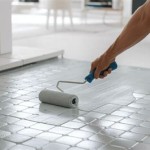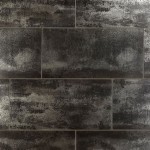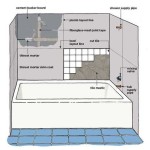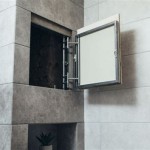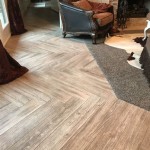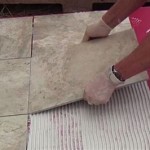Installing Flooring Over Asbestos Tile: A Guide for Homeowners
Asbestos tile was a popular flooring material in the 1950s and 1960s. However, due to its known health risks, it is no longer recommended for use. If you have asbestos tile in your home, you may be considering installing new flooring over it. While this is possible, it's crucial to understand the potential risks and take the necessary precautions to ensure the safety of your family and yourself. This article will provide a comprehensive guide to installing flooring over asbestos tile, addressing the safety concerns and explaining the different installation methods.
Asbestos Tile: Understanding the Risks
Asbestos is a naturally occurring mineral that was once widely used in various building materials due to its fire resistance and durability. However, prolonged exposure to asbestos fibers can lead to serious health problems like mesothelioma, lung cancer, and asbestosis. While intact asbestos tile generally poses minimal risk, the danger arises when the tiles are disturbed, releasing microscopic fibers into the air. Therefore, care must be taken during any work involving asbestos tile.
Assessing the Asbestos Tile
Before beginning any installation project, it is essential to determine whether the existing flooring is actually asbestos tile. It is highly recommended to consult a qualified professional for accurate identification. You can conduct a visual inspection, looking for specific characteristics like a smooth, glossy surface, a uniform color, and a pattern of squares or rectangles. However, visual identification is not always reliable. An accredited laboratory can provide definitive testing results based on a sample of the material.
Encapsulation vs. Removal: Choosing the Right Approach
Once you have confirmed the presence of asbestos tile, you need to decide how to proceed. The two main approaches involve encapsulation and removal. Encapsulation involves sealing the asbestos tile to prevent fiber release. This is generally a more affordable and less invasive option. However, it requires proper application of approved sealant materials and regular maintenance to ensure long-term effectiveness. On the other hand, removal involves removing the asbestos tile completely, which is a more costly and complex process involving trained professionals and proper disposal procedures. Choosing the appropriate approach depends on factors like the condition of the tile, the budget, and the potential risks involved.
Installing Flooring Over Encapsulated Asbestos Tile
If you choose to encapsulate the asbestos tile, you can proceed with installing new flooring over it. However, it's crucial to select suitable flooring that can be installed over a sealed surface. Some common options include:
- Vinyl flooring: Vinyl sheet or tile flooring is a popular choice for installations over asbestos tile. It is a durable, water-resistant material that can be installed directly over the encapsulated surface.
- Luxury vinyl plank (LVP): LVP offers a realistic wood look with excellent durability and water resistance, making it an appealing option for many homeowners. It can also be installed over encapsulated asbestos tile with the right underlayment.
- Laminate flooring: Laminate flooring replicates the look of hardwood at a lower cost. It can be considered for installation over encapsulated asbestos tile, but the underlayment needs to provide sufficient cushioning and vapor barrier protection.
- Carpet: While installing carpet over asbestos tile is possible, it is not recommended due to the potential for trapping dust and fibers beneath the carpeting. If you must install carpet, ensure the encapsulated asbestos tile is properly sealed and that an appropriate underlayment is used.
Installation Considerations for Flooring
Regardless of the chosen flooring type, certain installation considerations apply when working over asbestos tile. It is crucial to ensure:
- Proper preparation: The encapsulated asbestos tile surface should be smooth, clean, and free of debris before installing any new flooring. Ensure the existing flooring is not cracked or damaged, as this can compromise the encapsulation and pose a risk.
- Adequate underlayment: Choose an underlayment specifically designed for installation over existing surfaces. The underlayment should provide cushioning, moisture barrier protection, and contribute to a sound-dampening effect.
- Appropriate adhesives and fasteners: Use adhesives and fasteners that are compatible with both the flooring type and the encapsulated asbestos tile surface. Consult manufacturer recommendations for specific guidelines.
Encapsulation: Safety Precautions
When encapsulating asbestos tile, it's vital to follow strict safety regulations to minimize the risk of fiber release. These practices include:
- Using approved sealants: Choose sealants specifically designed for encapsulating asbestos tile. Ensure they are EPA-approved and follow the manufacturer's instructions for application and curing time.
- Wearing proper personal protective equipment (PPE): Always wear a respirator with a HEPA filter, long-sleeved clothing, gloves, and eye protection during the encapsulation process. This will protect you from inhaling asbestos fibers.
- Creating containment barriers: Before starting work, seal off the work area with plastic sheeting to contain dust and fibers. This helps prevent contamination of other areas within the home.
- Proper disposal: Dispose of any sealant materials and contaminated waste in accordance with local regulations. Ensure it is safely transported and disposed of in a designated asbestos waste facility.
- Regular maintenance: After encapsulation, inspect the sealed surface regularly for signs of damage or wear. Re-seal any cracks or gaps promptly to maintain the integrity of the encapsulation.
Professional Assessment and Installation: When to Seek Help
While installing flooring over encapsulated asbestos tile can be a DIY project for some, it's crucial to acknowledge the safety risks and potential complexities involved. If you have any doubts or concerns regarding asbestos tile identification, encapsulation, or installation, consulting a qualified professional is highly recommended. Professionals have the expertise and equipment to safely handle asbestos materials, complete the encapsulation process, and ensure proper flooring installation over the sealed surface.

Installing Hardwood Over Asbestos Tiles Homeadvisor

How To Install Hardwood Flooring Over Asbestos Tiles 123

Install Hardwood Floor Over Asbestos Tile Without A Floating Subfloor Ruth Chafin Interior Design

Installing Laminate Flooring Over Asbestos Tiles The Money Pit

Flooring That Can Be Installed Over Asbestos Tile

How To Install Tile Over Asbestos Ehow

Can I Put A New Floor Over Asbestos Tiles Branch Environmental

Flooring That Can Be Installed Over Asbestos Tile

What Flooring Can You Put Over Asbestos Tile Hunker

Flooring That Can Be Installed Over Asbestos Tile
Related Posts

